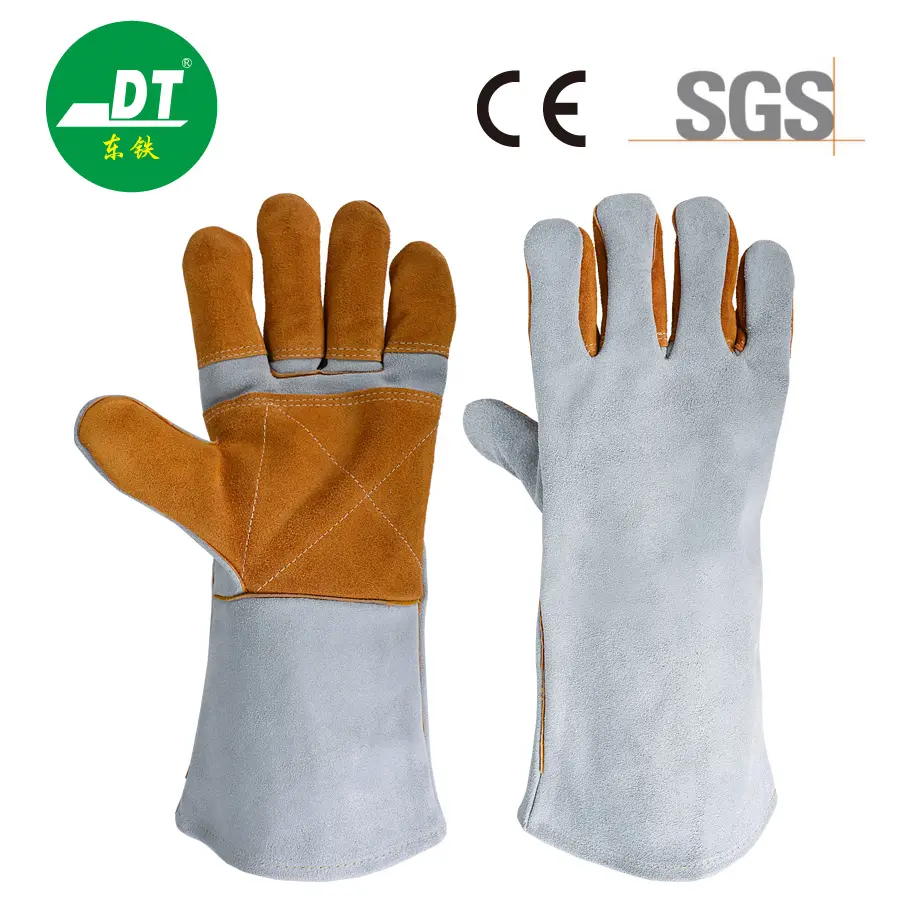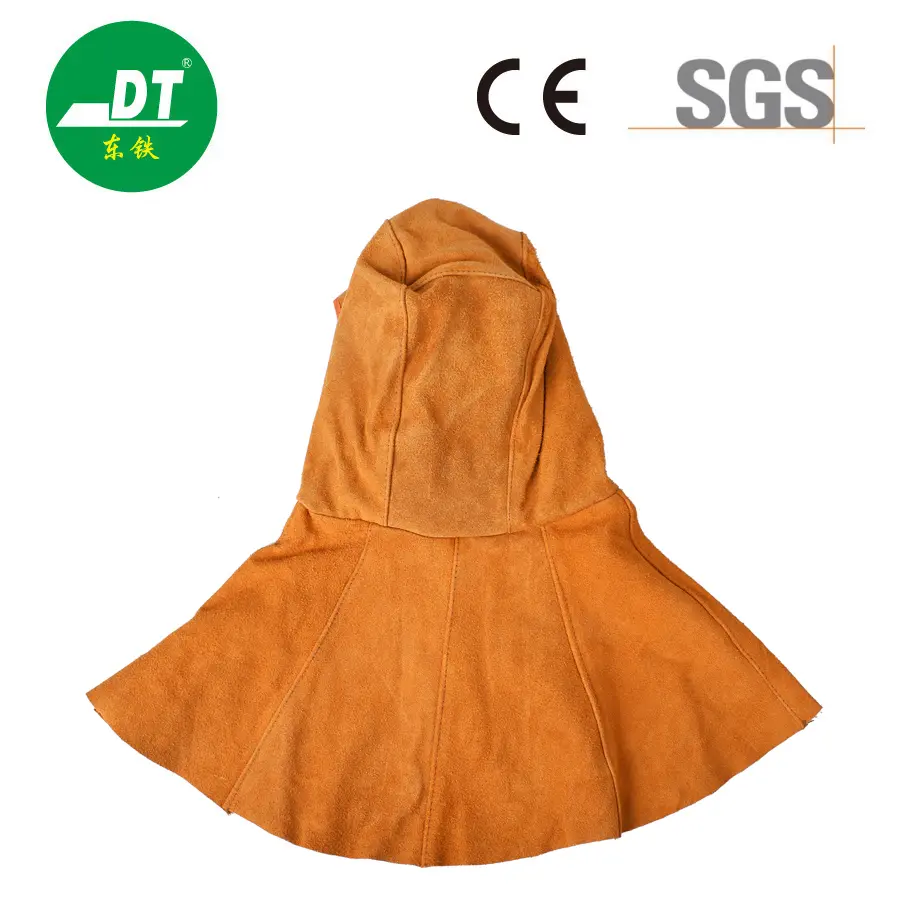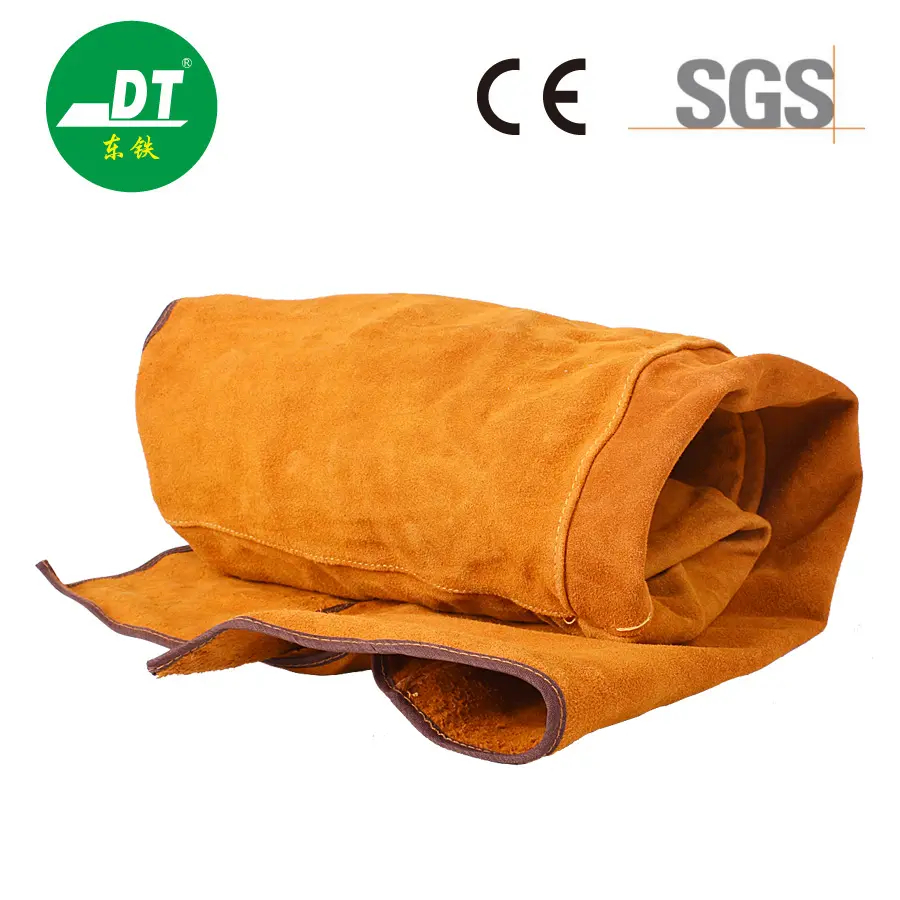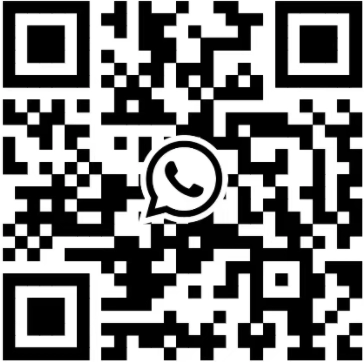Stick Welding Electrode Polarity Explained: The Ultimate Guide to Positive or Negative
As someone who has spent decades in the manufacturing of welding protection, from durable gloves to full-body apparel, I'm Allen, and I've spoken with countless professionals like Mark Thompson from the USA. A recurring topic, and a frequent point of confusion, is polarity in stick welding. Getting it right is not just about a neat-looking weld; it's fundamental to the strength, integrity, and safety of the final product. Understanding whether to use a positive or negative electrode can be the difference between a successful welding job and a costly failure.
This guide is designed to cut through the technical jargon. We will explore the core principles of welding electrode polarity, explain the different types, and provide practical advice on how to choose the right polarity for your specific welding application. Whether you're a seasoned procurement officer ensuring your teams have the best information or a welder aiming for perfection, this article will provide the clarity you need to master polarity in stick welding.
What Exactly is Polarity in Welding and Why is it Crucial for Stick Welding?
In the simplest terms, polarity in welding refers to the direction of the electrical current's flow in the welding circuit. Think of it like the terminals on a standard battery: you have a positive (+) and a negative (-). The way you connect your welding circuit determines which direction the electricity travels between the electrode and the workpiece. This concept is fundamental, especially in Shielded Metal Arc Welding (SMAW), more commonly known as stick welding, because it directly controls where the heat from the welding arc is concentrated.
The choice of polarity has a profound impact on the welding process. It influences:
- Penetration Depth: Whether the weld is deep and narrow or shallow and wide.
- Deposition Rate: How quickly the consumable electrode metal is deposited onto the workpiece.
- Arc Stability: The smoothness and consistency of the arc.
- Weld Bead Appearance: The final look and profile of the weld.
For DC welding, you have a choice. The polarity is constant, but you decide whether the electrode is positive or negative. In AC welding, the polarity is not a choice; the welding current rapidly switches back and forth between positive and negative. Understanding this distinction is the first step in controlling your welding results and ensuring a high-quality, efficient welding process. The correct polarity setting is not a minor detail; it's a critical variable that every skilled welder must master.
What are the Basics of Stick Welding Electrodes and Their Polarity?
Before diving deeper into polarity, it's essential to understand the tool at the center of the process: the stick welding electrode. This is a metal rod covered in a flux coating. When you strike an arc, the rod melts to become the filler metal, and the flux burns to create a gaseous shield that protects the molten weld pool from atmospheric contamination. The specific chemical makeup of this flux is what dictates the electrode's characteristics and, crucially, which polarity it's designed for.
There are three main types of polarity used in stick welding. The type of electrode used will determine which polarity is appropriate.
| Polarity Type | Abbreviation | Also Known As | Description |
|---|---|---|---|
| Direct Current Electrode Negative | DCEN | Straight Polarity | The electrode is connected to the negative terminal. Current flows from the electrode to the workpiece. |
| Direct Current Electrode Positive | DCEP | Reverse Polarity | The electrode is connected to the positive terminal. Current flows from the workpiece to the electrode. |
| Alternating Current | AC | AC Polarity | The current rapidly alternates its direction of flow. The electrode and workpiece continuously switch polarity. |
The packaging of any welding electrode will specify which polarity or polarities it is designed to run on. Ignoring this recommendation is a recipe for frustration and poor weld quality. Therefore, understanding the basics of these three polarity options is non-negotiable for achieving professional results.
What is DC Electrode Negative (DCEN), Also Known as Straight Polarity?
In a DCEN (Direct Current Electrode Negative) setup, the electrode holder is connected to the negative terminal of the welding machine, and the ground clamp is connected to the positive terminal. According to the principles of physics, electrons flow from the negative to the positive terminal. This means the current flows from the electrode to the workpiece.
This direction of flow concentrates approximately two-thirds of the arc's heat onto the workpiece. The major effects of this negative polarity are:
- Higher Deposition Rate: The electrode melts off faster, allowing for quicker travel speeds. This is because less heat is being directed at the electrode tip.
- Lower Penetration: With less heat blasting into the base metal, the weld is shallower.
Because of these characteristics, DCEN, or straight polarity, is ideal for welding thin materials. If you were to use a deep-penetrating polarity on sheet metal, you would likely burn right through it. DC straight polarity allows you to lay down a bead quickly without excessive penetration, making it the preferred choice for applications where burn-through is a major concern.

What is DC Electrode Positive (DCEP), Also Known as Reverse Polarity?
DCEP (Direct Current Electrode Positive) is the most common polarity used for stick welding. In this configuration, you do the opposite of DCEN: the electrode holder is connected to the positive terminal, and the ground clamp is connected to the negative terminal. This setup reverses the flow of current, so electrons now travel from the workpiece to the electrode.
This change in direction has a significant impact on heat distribution. With DCEP, or reverse polarity, approximately two-thirds of the arc's heat is concentrated at the tip of the electrode. This leads to:
- Deeper Penetration: The intense heat at the electrode tip creates a powerful, digging arc that penetrates deep into the base metal. This is essential for creating strong welds on welding thick materials.
- Cleaning Action: The flow of electrons away from the workpiece has a cleaning effect, helping to remove oxides and impurities from the surface of the base metal. This results in a stronger, more sound weld.
- Increased Arc Stability: Many common electrodes, like the E7018, are designed for DCEP and provide a very smooth and stable welding arc when this polarity is used.
Given these benefits, DCEP is the go-to polarity for structural steel, pipe welding, and general repair on thick sections. The deep penetration it provides ensures that the weld fuses completely with the base metal. When undertaking these demanding jobs, it is imperative that welders are protected. Our 14 inch Thick Palm Welding Protective Gloves are specifically designed to withstand the high heat and spatter associated with DCEP applications.
How Does AC Welding Polarity Differ from DC?
AC welding introduces a different dynamic to the polarity equation. With Alternating Current (AC), the welding current doesn't flow in a single, constant direction. Instead, the power source causes the polarity to cycle rapidly from positive to negative and back again. In the United States, this happens 60 times per second, meaning the polarity changes 120 times per second.
This rapid switching of AC polarity means that the heat of the arc is evenly distributed, spending half its time on the electrode and half its time on the workpiece. This results in:
- Medium Penetration: AC provides penetration that is deeper than DCEN but shallower than DCEP. It's a middle-ground option.
- Prevention of Arc Blow: Arc blow is a phenomenon in DC welding where the magnetic field created by the current causes the arc to wander or deflect, especially when welding in corners or on heavily magnetized material. Because AC current is constantly reversing its magnetic field, it effectively cancels out this issue.
- Versatility with Compatible Electrodes: Many general-purpose electrodes, like E6011 and E6013, are designed to run well on AC polarity.
AC welding machines are often less expensive and simpler than DC machines, making them popular for hobbyists and small shops. The balanced polarity makes AC a versatile choice for a variety of general fabrication and repair tasks where deep penetration is not the primary requirement.

How Does the Type of Electrode Affect the Choice of Polarity?
This is perhaps the most important rule when it comes to polarity: let the electrode guide your decision. The chemical composition of the flux coating on a stick welding electrode is engineered to perform under a specific electrical condition. The manufacturer will always indicate the required polarity on the box or in the product specifications. Using an electrode with the wrong polarity will prevent the flux from doing its job correctly, resulting in a poor weld.
Here’s a breakdown of some common stick electrodes and how they relate to polarity:
| Electrode (AWS) | Recommended Polarity | Key Characteristics & Applications |
|---|---|---|
| E6010 | DCEP (Reverse Polarity) Only | Aggressive, deep-penetrating arc. Excellent for pipe, construction, and dirty or rusty materials. |
| E6011 | AC, DCEP (Reverse Polarity) | Similar to E6010 but can be used with AC welders. Very versatile for farm and maintenance repair. |
| E6013 | AC, DCEN, DCEP | Soft arc with shallow penetration. Easy to use. Good for sheet metal and general-purpose light fabrication. |
| E7018 | AC, DCEP (Reverse Polarity) | Low-hydrogen electrode. Produces strong, high-quality, crack-resistant welds. Used for structural steel, heavy equipment. |
| E7024 | AC, DCEN, DCEP | High-iron powder electrode with a very high deposition rate. Used for fast, flat, and horizontal fillet welds. |
As you can see, the choice of polarity in stick welding is not arbitrary. It is intrinsically linked to the type of electrode you are using. An E7018 electrode, for example, relies on the heat concentration of DCEP to properly melt its low-hydrogen flux and create a high-integrity weld. Attempting to run it on DCEN would result in a messy, unstable arc and a weak weld. Always read the packaging first!
What are the Advantages and Disadvantages of Positive and Negative Polarity?
To make an informed decision, it helps to see a direct comparison of the advantages and disadvantages of positive and negative polarity. Each polarity offers a unique set of trade-offs, and understanding them allows you to select the best option for the specific welding task at hand.
DCEP (Reverse Polarity)
- Advantages:
- Deep Penetration: Excellent for creating strong joints on thick materials.
- Cleaning Action: Helps remove contaminants for a purer weld.
- Stable Arc: Generally provides the smoothest and most controllable arc with compatible electrodes.
- Disadvantages:
- Lower Deposition Rate: Slower travel speeds compared to DCEN.
- More Heat in the Electrode: Can lead to a shorter electrode life and overheating of the electrode holder.
DCEN (Straight Polarity)
- Advantages:
- High Deposition Rate: Allows for faster welding and increased productivity.
- Less Penetration: Ideal for welding thin materials without burning through.
- Less Distortion: The lower heat input into the base material can reduce warping.
- Disadvantages:
- Shallow Penetration: Not suitable for thick sections where strength is critical.
- Less Stable Arc: The arc can be more difficult to control with some electrodes.
- No Cleaning Action: Not recommended for dirty, rusty, or contaminated materials.
There is no single "best" polarity; the right choice is always situational. The disadvantages of each polarity highlight why it's so crucial to match the polarity to both the electrode and the application.

What are the Consequences of Using the Wrong Polarity?
From my experience visiting workshops and talking to distributors, I can tell you that using the wrong polarity is a common mistake for beginners, and it leads directly to frustration and subpar results. The consequences aren't just a poor-looking weld; they can compromise the structural integrity of the entire project.
Here's what you can expect if the polarity is incorrect:
- Unstable or Uncontrollable Arc: The arc between the electrode and workpiece will be erratic, sputter excessively, and be very difficult to maintain. You'll struggle to keep a consistent bead.
- Excessive Spatter: Droplets of molten metal will fly everywhere instead of being deposited neatly in the weld joint. This is messy, wasteful, and a safety hazard.
- Poor Penetration: Using DCEN when DCEP is required will result in a shallow weld that just sits on top of the metal instead of fusing with it. This creates a dangerously weak joint.
- Porosity and Inclusions: The flux coating on the electrode will not burn correctly, failing to provide the necessary shielding gas. This allows impurities from the air to get trapped in the weld, creating holes (porosity) and slag inclusions that weaken the weld.
In short, wrong polarity can lead to wasted materials, wasted time, and a weld that is not fit for purpose. It’s a foundational error that undermines all other aspects of good welding techniques. This is why a little knowledge about polarity goes a long way. Protecting yourself during any welding process is also paramount, which is why having reliable gear like our Heat&Flame Resistant Arm Protection Leather Welding Sleeves is essential to prevent burns from the inevitable spatter.
How Do I Choose and Set the Correct Polarity on My Welding Machine?
Setting the correct polarity is a straightforward, hands-on process. Once you understand the "why," the "how" becomes simple. Here is a step-by-step guide to ensure you get it right every time.
- Read the Electrode Box: This is the golden rule. Before you do anything else, check the manufacturer's recommendation for the stick welding electrode you've chosen. It will clearly state whether to use AC, DCEP, or DCEN.
- Power Down Your Machine: For safety, always make sure your welding machine is turned off before you change the cable connections.
- Identify the Terminals: Locate the output terminals on your power source. They will be clearly marked with a positive (+) symbol and a negative (-) symbol.
- Connect for DCEP (Reverse Polarity): If your electrode requires DCEP, connect the electrode holder lead to the positive terminal (+). Connect the ground clamp lead to the negative terminal (-).
- Connect for DCEN (Straight Polarity): If your electrode requires DCEN, do the opposite. Connect the electrode holder lead to the negative terminal (-). Connect the ground clamp lead to the positive terminal (+).
Remember this simple mnemonic:
- Reverse Polarity (DCEP): Electrode Positive. The electrode lead goes to the positive plug.
- Straight Polarity (DCEN): Electrode Negative. The electrode lead goes to the negative plug.
Double-checking these connections before you start welding can save you a significant headache. As a supplier of safety equipment, we know that reliable processes create a safer work environment. Partnering with a knowledgeable manufacturer like us at DTlabor ensures you have access to not just quality products, but also the expertise behind them.

What are Real-World Applications of Positive and Negative Polarity?
Theory is great, but let's look at some real-world applications of positive and negative polarity to see how this knowledge plays out in practical scenarios. Understanding these examples will help you visualize when to use each type of polarity.
-
Application 1: Structural Steel Beam Fabrication
- Task: Welding thick I-beams for a building frame.
- Electrode: E7018. This electrode is chosen for its high tensile strength and low-hydrogen properties, which prevent cracking under stress.
- Polarity: DCEP (Reverse Polarity). This polarity is required to achieve the deep penetration necessary to fuse the thick flanges of the beams together, ensuring maximum strength and structural integrity.
-
Application 2: Repairing a Lawnmower Deck
- Task: Patching a rusted-out hole in a thin steel lawnmower deck.
- Electrode: E6013. This electrode is chosen because it has a soft arc and is easy to use on thin metal.
- Polarity: DCEN (Straight Polarity). This negative polarity is ideal because it minimizes penetration, reducing the risk of blowing a bigger hole in the already thin and weak metal. It allows you to build up the weld bead without excessive heat input.
-
Application 3: Building a Gate from Galvanized Fencing
- Task: Welding galvanized (zinc-coated) square tubing.
- Electrode: E6011. This electrode is chosen for its aggressive arc, which can burn through surface contaminants like the zinc coating.
- Polarity: AC Polarity. Using an AC welding machine and AC polarity is often preferred for magnetic or coated materials. It prevents the arc blow that can occur with DC and provides a stable arc that can handle the impurities burning off the galvanized surface.
These examples show how the material thickness, the electrode type, and the job's specific demands all influence the choice of polarity.
Key Takeaways to Remember
Mastering polarity is a key step toward becoming a more proficient and efficient welder. It elevates your work from guesswork to a controlled, predictable process. Here are the most important things to remember:
- Polarity is Direction: It simply refers to the direction of electrical current flow in your welding circuit.
- Three Main Types: The three main types of polarity in stick welding are DC Electrode Positive (DCEP), DC Electrode Negative (DCEN), and Alternating Current (AC).
- DCEP for Depth: Use DCEP (Reverse Polarity) for deep penetration on thick materials. It puts more heat on the electrode and provides a cleaning action.
- DCEN for Speed: Use DCEN (Straight Polarity) for faster deposition rates and shallow penetration, making it perfect for thin metals.
- AC for Balance: AC Polarity offers a balance between DCEP and DCEN characteristics and is excellent for preventing arc blow.
- The Electrode is King: Always, always check the electrode packaging. The manufacturer specifies the correct polarity, and you should always follow their recommendation.
- Check Your Connections: Setting the polarity is as simple as connecting your electrode and ground leads to the correct positive (+) and negative (-) terminals on your welding machine.
By keeping these principles in mind, you can ensure that every weld you make is strong, clean, and perfectly suited to the task at hand.






